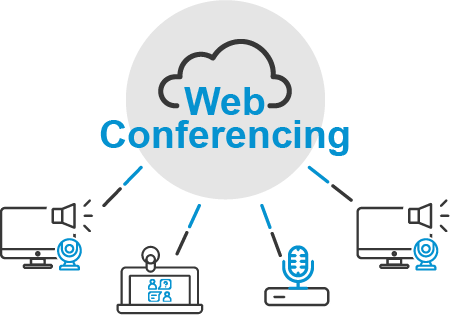
Reshaping Communication
In the wake of the COVID-19 pandemic, the way we communicate and collaborate underwent a dramatic shift, with video conferencing emerging as a key tool for remote work and virtual meetings. The video conferencing market witnessed unprecedented growth in 2020 and 2021, and this trend is expected to continue in 2023.
Market Analysis:
Increased Demand and Adoption
The pandemic served as a catalyst for the widespread adoption of video conferencing solutions. Companies of all sizes, educational institutions, healthcare providers, and individuals alike embraced this technology to stay connected. The demand for video conferencing tools is expected to remain high in 2023, driven by the continued growth of remote work, global collaboration, and flexible work arrangements.
Integration of Advanced Features
As video conferencing becomes an integral part of daily work routines, users are seeking more than just basic functionality. Vendors are responding by integrating advanced features such as real-time language translation, AI-powered transcription and captioning, augmented reality (AR) overlays, and virtual backgrounds. These innovations enhance user experience and make meetings more productive and engaging.
Examples
- Real-time language translation: Video conferencing platforms offer built-in language translation capabilities, eliminating language barriers and facilitating global collaboration.
- AI-powered transcription and captioning: Advanced algorithms transcribe spoken words into text during video conferences, improving communication clarity and enabling accessibility for individuals with hearing impairments.
- Augmented reality (AR) overlays: Video conferencing tools incorporate AR technology, allowing users to apply virtual elements like filters, stickers, and animations to their video feed, enhancing engagement and interactivity.
Focus on Security and Privacy
As the video conferencing market continues to evolve, security and privacy concerns are gaining prominence. In 2023, organizations and individuals will prioritize solutions that offer robust encryption, secure data transmission, and comprehensive privacy controls. Vendors will invest heavily in strengthening their security measures to address potential vulnerabilities and ensure user confidence.

Examples
- Robust encryption: Organizations and individuals will seek solutions that employ strong encryption protocols to protect their data during transmission and storage. Encryption ensures that sensitive information remains secure and inaccessible to unauthorized parties.
- Secure data transmission: The focus will be on solutions that provide secure data transmission mechanisms, such as end-to-end encryption. This ensures that the data exchanged during video conferences is encrypted from the sender to the recipient, reducing the risk of interception or unauthorized access.
- Comprehensive privacy controls: Users will prioritize solutions that offer granular privacy controls, allowing them to customize their privacy settings according to their preferences. This may include controlling who can join meetings, limiting screen-sharing capabilities, or implementing password protection for added security. Organizations will also look for platforms that comply with relevant data protection regulations to maintain compliance and safeguard user privacy.
Market Consolidation and Competition
The video conferencing market is becoming increasingly competitive. Established players will continue to enhance their offerings and expand their customer base, while new entrants will emerge with innovative solutions. Market consolidation is also expected, with strategic acquisitions and partnerships to gain a competitive edge. The competition will result in improved quality, more affordable pricing, and greater diversity of video conferencing options.
Predictions
Hybrid Work Models
As the world transitions to a post-pandemic era, hybrid work models are anticipated to become the new norm. This shift will fuel the demand for video conferencing solutions that seamlessly integrate in-office and remote collaboration. Companies will invest in platforms that facilitate smooth communication between employees, regardless of their physical location, resulting in increased productivity and improved work-life balance. Zoom and Microsoft Teams are both excellent options for hybrid work environments due to their comprehensive features and versatility.
Zoom
- Seamless hybrid collaboration: Zoom provides a seamless experience for both in-person and remote participants, making it ideal for hybrid work environments. It offers a user-friendly interface that supports video conferencing, audio calls, chat, and screen sharing. This allows team members to communicate and collaborate effectively, regardless of their location.
- Flexible meeting options: Zoom offers a range of meeting options to accommodate various hybrid work scenarios. Whether it's a small team meeting, a large company-wide webinar, or a combination of in-person and virtual attendees, Zoom provides the necessary features and scalability to support different meeting sizes and formats.
- Integration capabilities: Zoom integrates with various productivity tools and applications commonly used in hybrid work environments, such as calendar platforms, project management software, and document collaboration tools. This integration streamlines workflows and enables seamless transitions between different work tools.
- Enhanced security features: Zoom has made significant improvements to its security measures, including end-to-end encryption, meeting password protection, waiting rooms for participant control, and host controls for managing participants' privileges. These features ensure that sensitive information is protected and meetings are secure.
- Virtual collaboration tools: Zoom offers additional features to enhance collaboration during hybrid work. These include virtual whiteboards, screen annotations, breakout rooms for smaller group discussions, and co-annotation capabilities. These tools facilitate real-time collaboration, brainstorming, and decision-making, regardless of participants' physical location.
Microsoft Teams
- Seamless integration with Microsoft ecosystem: Microsoft Teams seamlessly integrates with other Microsoft products, such as Office 365, SharePoint, and OneDrive. This integration allows users to access and collaborate on files, documents, and shared resources within the Teams platform, enhancing productivity and streamlining workflows.
- Hybrid meeting support: Microsoft Teams provides robust support for hybrid meetings, enabling both in-person and remote participants to join seamlessly. It offers features like audio and video conferencing, screen sharing, chat, and file sharing, ensuring effective communication and collaboration among team members regardless of their location.
- Extensive collaboration capabilities: Microsoft Teams offers a wide range of collaboration tools, including document collaboration, co-authoring, and version control. Users can work together on files in real-time, making it easy to collaborate on projects and share information within the team.
- Integration with other productivity tools: Similar to Zoom, Microsoft Teams integrates with various productivity tools commonly used in hybrid work environments. Users can leverage integrations with apps like Trello, Asana, and Salesforce to streamline workflows and manage tasks within the Teams platform.
- Enterprise-grade security: Microsoft Teams provides enterprise-grade security features, including data encryption, multi-factor authentication, and compliance with industry standards and regulations. This ensures the confidentiality and integrity of sensitive information exchanged during meetings and conversations.
Integration with Collaboration Tools
Video conferencing platforms will increasingly integrate with popular collaboration tools like project management software, document-sharing platforms, and virtual whiteboards. This integration will enhance workflow efficiency and enable teams to seamlessly transition from video calls to collaborative workspaces, making it easier to share ideas, track progress, and drive projects forward.
Mobile and Cloud Solutions
Mobile video conferencing will witness significant growth in 2023, as smartphones and tablets continue to play a vital role in remote work and communication. Vendors will focus on optimizing their applications for mobile devices, ensuring a smooth and user-friendly experience. Cloud-based video conferencing solutions will also gain traction due to their scalability, cost-effectiveness, and ease of implementation.
Virtual Events and Webinars
The popularity of virtual events, conferences, and webinars surged during the pandemic, and this trend will persist in 2023. Video conferencing platforms will evolve to provide comprehensive features tailored for large-scale virtual events, offering networking opportunities, breakout sessions, and interactive features that mimic the experience of in-person gatherings. Seamlessly switching between presentations, panel discussions, and Q&A sessions will be crucial.
As a Gold Certified Integrator for Zoom, Profound Technologies takes great pride in their expertise and commitment to deliver top-notch integration solutions. We invite you to watch our Zoom Webinar at Profound hosted by our esteemed team. During this session, we delve into various standard room types, providing valuable insights and exploring the options available to enhance your Zoom experience. This webinar serves as a remarkable opportunity to broaden your understanding and make informed decisions regarding the optimal room setup that aligns with your unique requirements.

The Evolving Landscape of Video Conferencing
Video conferencing has become an essential tool in our interconnected world, and its relevance will only continue to grow in 2023. As the market evolves, we can expect enhanced features, improved security measures, and increased integration with collaboration tools. Hybrid work models, mobile solutions, and virtual events will shape the landscape of video conferencing in the coming year. Whether for business meetings, educational purposes, or personal connections, video conferencing will undoubtedly remain a crucial component of our digital lives in 2023 and beyond.
Schedule a meeting now to speak with an expert on Microsoft Teams or Zoom!

.jpg)
.jpg)